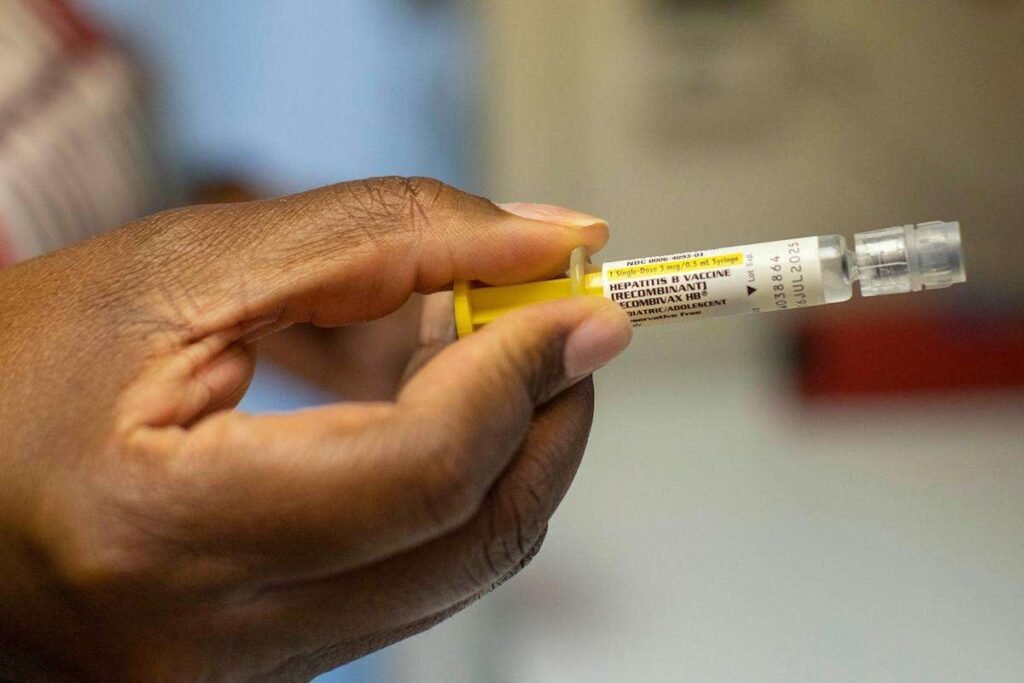A federal vaccine advisory panel has recommended narrowing the use of the combined measles, mumps, rubella, and varicella (MMRV Vaccine) shot for younger children, citing safety data, while postponing a decision on whether to continue recommending the hepatitis B vaccine for newborns. The recommendations are not final until approved by the acting director of the Centers for Disease Control and Prevention (CDC) or the Secretary of Health and Human Services (HHS).
MMRV Vaccine Guidance Adjusted for First Dose
The CDC’s Advisory Committee on Immunization Practices (ACIP) voted 8-3, with one abstention, to recommend that children around 12 months old receive separate injections for measles, mumps, rubella (MMR) and chickenpox rather than the four-in-one MMRV combination.
The change is based on evidence that the MMRV vaccine carries a slightly higher, though still rare, risk of seizures when administered between 12 and 15 months of age. For the second dose, given between ages 4 and 6, the combined shot would remain an option.
Committee members emphasized that combination vaccines offer convenience and improve completion rates, but separating doses in the first round was considered a safer approach for younger children. “The advantage of combination vaccines is that children are more likely to complete the series, but safety data guided this recommendation,” one adviser said.
Hepatitis B Decision Postponed
The committee delayed a vote on whether to continue recommending hepatitis B vaccination for all newborns at birth. The panel plans to revisit the issue after further discussion.
Some health professionals have expressed concern that reducing universal hepatitis B vaccination could increase transmission risks, particularly since many infants may not otherwise be identified as at risk.
Implications for Families and Healthcare Providers
The adjustments are not expected to limit access to vaccines. Children covered through the federally funded Vaccines for Children (VFC) program, which provides shots at no cost to about half of U.S. children, would still have the option of receiving either the combination or separate doses.
However, public health experts cautioned that separating vaccines could create practical challenges. More injections may mean additional doctor visits, higher chances of missed doses, and more complicated supply and manufacturing logistics. “Compliance often falls when vaccine doses are split,” a committee member noted, underscoring the importance of minimizing barriers to timely vaccination.
The advisory committee, now working under new membership, will continue evaluating recommendations for both MMRV Vaccine and hepatitis B vaccines. If adopted by CDC leadership, the changes would be incorporated into the national immunization schedule, which also shapes insurance coverage policies. Most major insurers have indicated they will continue covering all currently recommended vaccines through at least 2026.
For families and providers, the updates highlight the balance between safety data and the need to maintain high vaccination coverage. Clear communication of the changes, experts say, will be critical to ensuring parents and clinicians remain confident in the vaccine schedule and children remain protected from preventable diseases.
Also read :- Health Insurance Plans Will Cover ACIP-Recommended Vaccines Without Cost Sharing Through 2026









